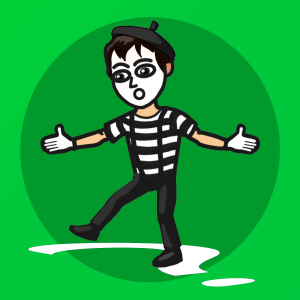How to Be the Best ESL Teacher

Kavia Gale
Being an exceptional ESL teacher goes beyond just teaching grammar and vocabulary. It’s about creating a positive, engaging, and supportive environment where students feel motivated to learn and grow. Here are some key strategies to help you become the best ESL teacher you can be.
Steps to Being The Best
1️⃣ Give Encouragement and Build Confidence
ESL students often feel self-conscious about making mistakes. Your role is to create a safe space where they feel comfortable taking risks. Offer specific praise like, “Your pronunciation has improved so much!” or “Great job using that new vocabulary!” Celebrate small wins to boost their confidence and keep them motivated.
2️⃣ Listen Actively
Listening well is one of the most important skills an ESL teacher can have. Pay attention not only to what students say but also to how they say it. Are they struggling with a particular sound or grammar point? Do they seem frustrated or disengaged? Active listening helps you tailor your lessons to their needs and shows students that you care.
3️⃣ Organize Your Classroom and Lessons
A well-organized classroom and lesson plan set the stage for effective learning. Use clear labels, color-coded materials, and visual schedules to help students navigate the space. Plan lessons with clear objectives and a logical flow, and always have backup activities ready in case something doesn’t go as planned.
4️⃣ Lead with Authority and Warmth
A great ESL teacher is both a leader and a guide. Set clear expectations for behavior and participation, but do so with kindness and understanding. Your students should feel respected and supported, not intimidated. Balance firmness with approachability to create a positive classroom culture.
5️⃣ Be an Actor in the Classroom
Not every teacher is naturally bubbly or extroverted, and that’s okay! Think of teaching as a performance. Use gestures, facial expressions, and tone of voice to convey enthusiasm and energy. Even if you’re not naturally high-energy, a little effort to “brighten up” your delivery can make a big difference in keeping students engaged.
6️⃣ Speak with Clarity and Energy
Your voice is one of your most powerful tools. Speak clearly and at a moderate pace to ensure students understand you. Vary your tone and volume to maintain interest—use a high-energy voice for exciting activities and a calmer tone for focused tasks. Avoid monotony; your energy can be contagious!
7️⃣ Use Humor and Fun
Humor is a universal language. Incorporate jokes, funny stories, or playful activities to lighten the mood and make learning enjoyable. For example, use silly examples when teaching grammar or play a lighthearted game to review vocabulary. A classroom that laughs together learns together.
8️⃣ Be Patient and Flexible
ESL students learn at different paces, and lessons don’t always go as planned. Be patient when students struggle, and be flexible enough to adjust your approach if something isn’t working. Your adaptability shows students that it’s okay to make mistakes and keep trying.
9️⃣ Build Relationships
Take time to get to know your students as individuals. Learn about their interests, cultures, and goals. This not only helps you tailor lessons to their needs but also builds trust and rapport. A student who feels seen and valued is more likely to engage and succeed.
🔟 Use Multisensory Techniques
Engage all learning styles by incorporating visuals, sounds, and hands-on activities. For example:
- Use flashcards for visual learners.
- Play songs or podcasts for auditory learners.
- Incorporate role-playing or games for kinesthetic learners.
The more senses you engage, the more memorable the lesson will be.
TIP: Reflect and Improve
Great teachers are always learning. After each lesson, take a moment to reflect:
- What worked well?
- What could be improved?
Seek feedback from students and colleagues, and stay open to new ideas and techniques. Continuous improvement is the hallmark of an exceptional teacher.
By combining these strategies—encouragement, active listening, organization, leadership, and a touch of performance—you can become the kind of ESL teacher who not only teaches effectively but also inspires and empowers students to reach their full potential.
10 Classroom Management Strategies for ESL Teachers
Classroom management is one of the biggest challenges ESL teachers face. A well-managed classroom creates a positive learning environment, reduces disruptive behavior, and helps students stay engaged. Whether you’re teaching in-person or online, these ten strategies will help you maintain control and create a successful ESL classroom.
g
Time-Saving Lesson Planning Tips for ESL Teachers
Teaching ESL can be incredibly rewarding, but lesson planning often takes up a huge amount of time. If you’re spending hours preparing lessons, it might be time to streamline your process. Here are some practical time-saving tips to help you plan effective lessons without the stress.
g
10 Fun Speaking Activities to Get ESL Students Talking
Encouraging ESL students to speak confidently in class can be challenging, but using the right activities can make a huge difference. Engaging, interactive speaking exercises motivate students to participate and improve their fluency. Here are 10 dynamic ESL speaking activities designed to boost communication skills, confidence, and classroom interaction.
g
Best ESL Activities for Beginners to Boost Learning
Teaching English to beginners can be both fun and challenging. To create engaging and effective ESL lessons, it’s essential to use interactive activities that enhance speaking, listening, and vocabulary skills. Whether you’re teaching children or adults, these ESL activities for beginners will make your classes more enjoyable and productive.
g
How to Improve Your English Speaking Fluency
Improving your English speaking fluency can feel like a challenge, but with the right strategies and consistent effort, you can achieve significant progress. Fluency is not just about knowing grammar and vocabulary—it’s about using them naturally and confidently in conversation. This guide will explore effective methods to help you speak English more fluently and communicate with ease.
g
10 Fun and Effective Vocabulary Games for Expanding Word Knowledge
Building a strong vocabulary is essential for effective communication, reading comprehension, and overall language development. But let’s face it—memorizing word lists can be tedious. Why not make learning new words fun and engaging? Whether you’re a teacher, a parent, or a student, these 10 vocabulary games are perfect for expanding word knowledge while having a blast!
g
Speaking

Charades and Drawing Game - 2 Games
2-4 Player Teams Class of up to 16 10 minutes + Beginner – Intermediate
Speed Drawing gives your students a chance to show off their artistic skills, and Charades get your students active.

Wheelgame - 3 Games
1-4 Player Teams Class of up to 20 10 minutes + Beginner/Basic/Intermediate
A fun game that teaches the essential questions in everyday conversation.

QuizKing - 2 Games
1-4 Player Teams Class of up to 20 10 minutes + Basic/Intermediate
Students master perfect sentence formation by playing a fun and easy quiz game.

Roleplay
2-3 Player Teams Class of up to 15 15 minutes + Basic/Intermediate
Fun and interesting situations for students to practice conversation.

Mini Debate
2-3 Player Teams Class of up to 15 15 minutes + Basic/Intermediate
Simple and fun topics for students to be passionate about.

Picture Match - 4 Games
1-4 Player Teams Class of up to 16 10 minutes + Beginner
Great word practice for young ones and addictive.

Topics Talk
2-4 Player Teams Class of up to 15 10 minutes + Basic/Intermediate
500 topics for students to hone their speech and factual speaking skills.

HotSeat
3-5 Player Teams Class of up to 15 10 minutes + Basic/Intermediate
An exciting game where teams have to describe a word to a student on the hotseat before time runs out.
FREE Worksheets
Discover our free English resource worksheets – perfect for parents and teachers alike!
At EnglishSauce, we know how important it is to have high-quality learning materials, whether you’re teaching at home or in the classroom.
Our growing collection includes worksheets across a wide range of topics and skill levels, designed for students of all ages and abilities.
Simply click on any image below to browse and download hundreds of free worksheets — ready to use today!









































